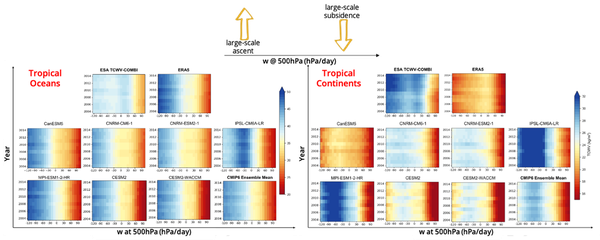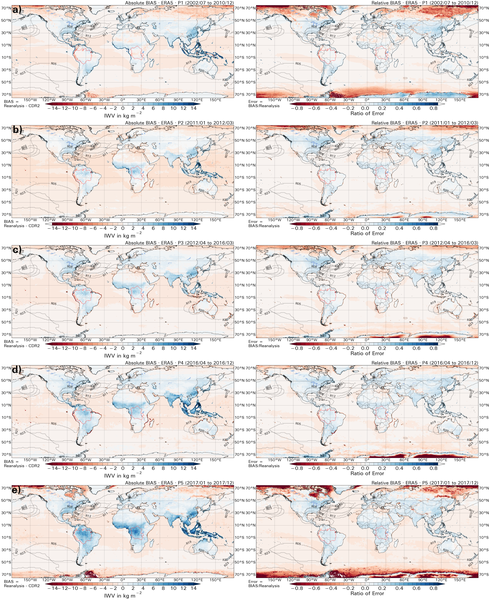The Water_Vapour_cci project has published two key User Case Studies using Climate Data Records (CDRs) from Phase 1
Team partners from the University of Versailles have published:
in the journal Atmospheric Chemistry and Physics.
Summary
The study focuses on the tropical belt, with a separation of oceanic and continental situations. The intercomparison is performed according to the probability distribution function (PDF) of the total column water vapour defined yearly from the daily scale, as well as its evolution with respect to large-scale overturning circulation. Seven global climate models participating in the CMIP6 program have been compared with the ESA CCI WV product as well as with ERA5.
Strong discrepancies are observed amongst the various climate models while the ensemble mean reproduced the observed year-to-year variability of tropospheric water vapour. Over the continents the differences are stronger, even with respect to ERA5 data. The individual discrepancies can be partly linked to the convective and moisture fluxes schemes.
Team partners led by the University of Vigo have published:
in the Quarterly Journal of the Royal Society.
Summary
CDR-2 (v2) has been used in this analysis to study the ability of the most common reanalyses to resolve correctly the vertical water vapour column during the main advective moisture transport phenomena. More than 4000 atmospheric river (AR) and nocturnal low-level jet (NLLJ) events have been evaluated jointly with the reanalyses and CDR-2, and the regions of the planet where the discrepancies are largest between them have also been detected.
In general, CDR-2 and reanalyses show good temporal correlation with reanalyses, and relatively low bias. It has also been observed that in certain regions of the planet (particularly tropical forests), the discrepancies increase. In any case, it is noted that in the critical regions for ARs and LLJs, CDR-2 shows that the behaviour of the main reanalyses is good. It is therefore concluded that the reanalyses can be safely used to initialise Eulerian and Lagrangian simulations for the study of the main moisture transport phenomena.



